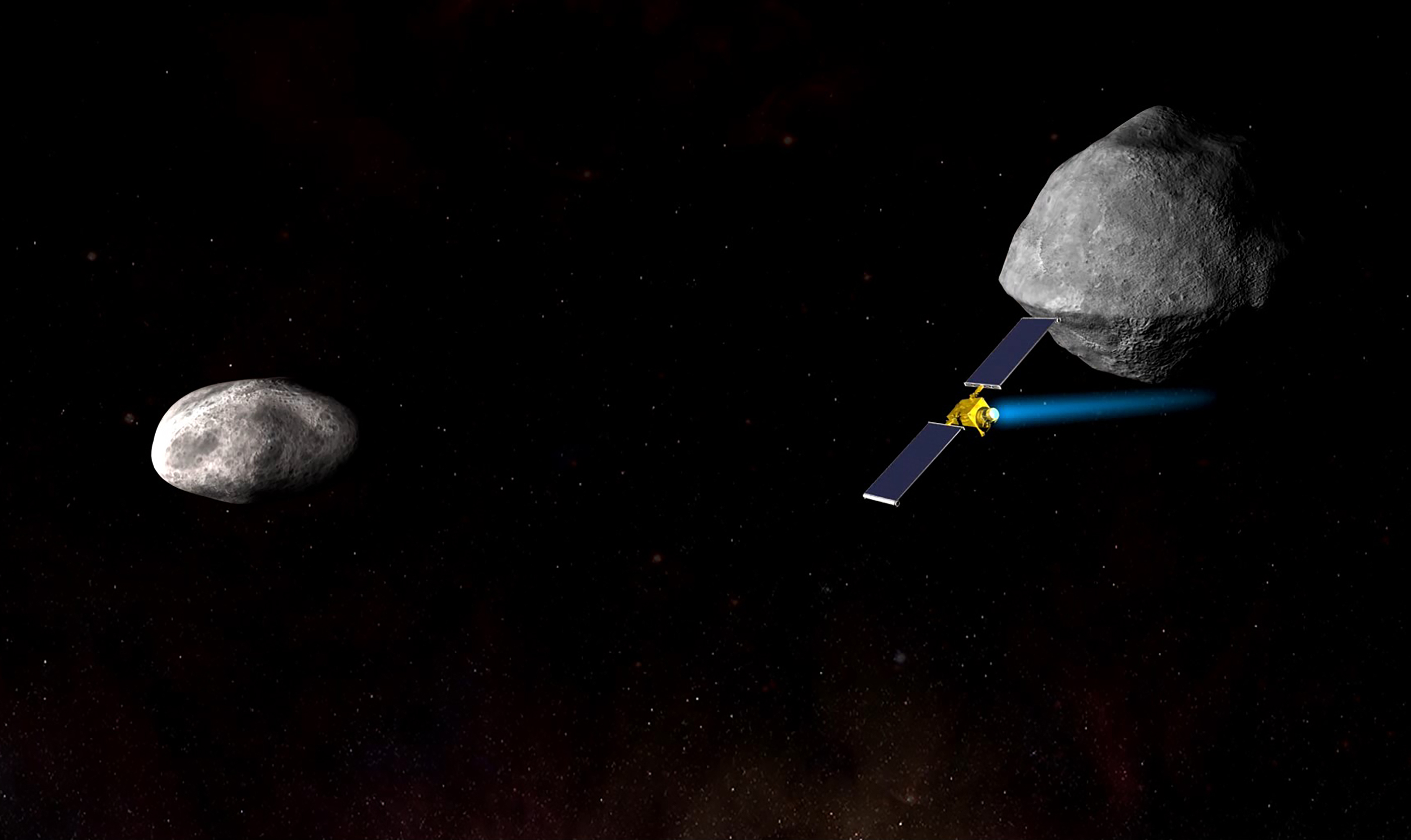Press Release
APL-Led Asteroid-Deflection Mission Passes Key Development Milestone
The first-ever mission to demonstrate an asteroid deflection technique for planetary defense has moved into the final design and assembly phase, following NASA’s approval on Aug. 16.
The Double Asteroid Redirection Test (DART), being designed, built and managed by the Johns Hopkins Applied Physics Laboratory in Laurel, Maryland, will test what’s known as the kinetic impactor technique — striking an asteroid to shift its orbit — and take a critical step in demonstrating how to protect our planet from a potential impact.
DART’s target is the asteroid Didymos, a binary system that consists of Didymos A, about one-half mile in size, and a smaller asteroid orbiting it called Didymos B, about 530 feet across. After launch — scheduled for spring/summer 2021 — DART will fly to Didymos (Greek for “twin”) and use an APL-developed onboard targeting system to aim itself at Didymos B. Then the spacecraft, about the size of a small car, would strike the smaller body at approximately 3.7 miles per second.
“With DART, we want to understand the nature of asteroids by seeing how a representative body reacts when impacted, with an eye toward applying that knowledge if we are faced with the need to deflect an incoming object,” said APL’s Andrew Rivkin, who co-leads the DART investigation with APL’s Andrew Cheng. “In addition, DART will be the first planned visit to a binary asteroid system, which is an important subset of near-Earth asteroids and one we have yet to fully understand.”
The kinetic impact technique works by making a very small change in the orbital speed of the target asteroid. DART will demonstrate the kinetic impact technique and will measure the effect of the DART impact. Observatories on Earth will determine the resulting change in the orbit of Didymos B around Didymos A, allowing scientists around the world to better determine the capabilities of kinetic impact as an asteroid mitigation strategy.
To assess and formulate capabilities to address potential asteroid threats, NASA established its Planetary Defense Coordination Office in 2016, which is responsible for finding, tracking and characterizing potentially hazardous asteroids and comets coming near Earth, issuing warnings about possible impacts, and assisting plans for and coordination of a U.S. government response to an actual impact threat.
APL manages DART for NASA’s Planetary Missions Program Office at Marshall Space Flight Center in Huntsville, Alabama. DART also is supported by teams from Goddard Space Flight Center, Greenbelt, Maryland; Johnson Space Center, Houston; Glenn Research Center, Cleveland; Langley Research Center, Hampton, Virginia; the Jet Propulsion Laboratory, Pasadena, California; the University of Maryland, College Park; University of Colorado, Boulder; Lawrence Livermore National Laboratory, Livermore, California; and Aerojet Rocketdyne, Arlington, Virginia.
To learn more about NASA planetary defense and DART, visit: https://www.nasa.gov/planetarydefense and http://dart.jhuapl.edu/.
